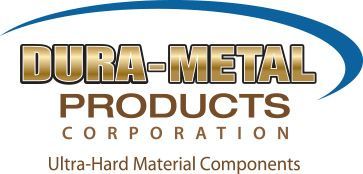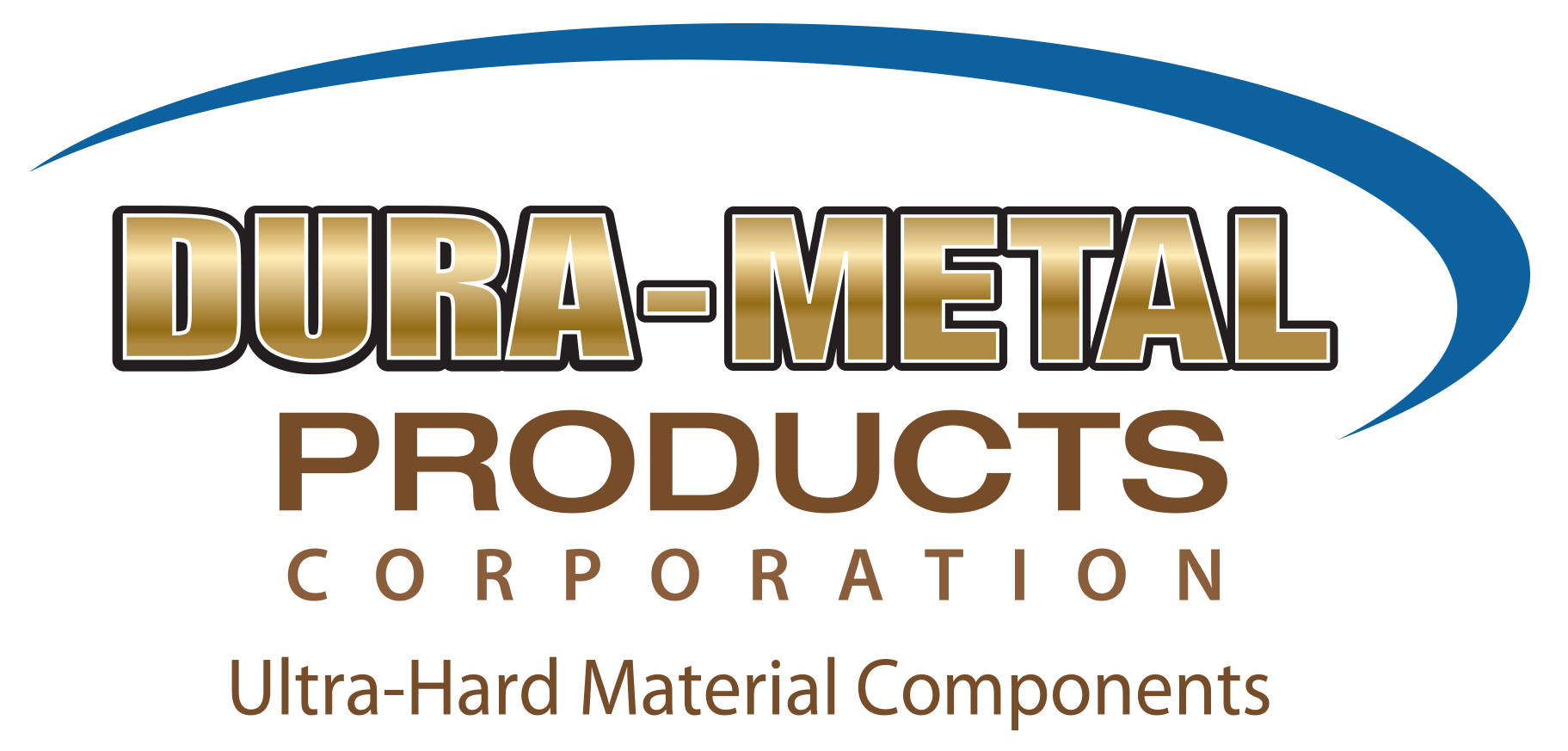ADD Plus
Precise Post P rocessing
• Free Quotes
• Certified Quality
ADDTEC3DM® is a service of Dura-Metal Products Corporation
Hours:
50 years of ultra-precision machining available as a resource to provide a end product to meet your standards.
VAPOR SMOOTHING
Vapor smoothing is a post process that can be applied to all composite parts. Widely used around MJF parts the vapor smoothing chemically melts the surface of the part. In the case of MJF parts this gives a darker gray tone to the part as well as seals and hardens the surface.
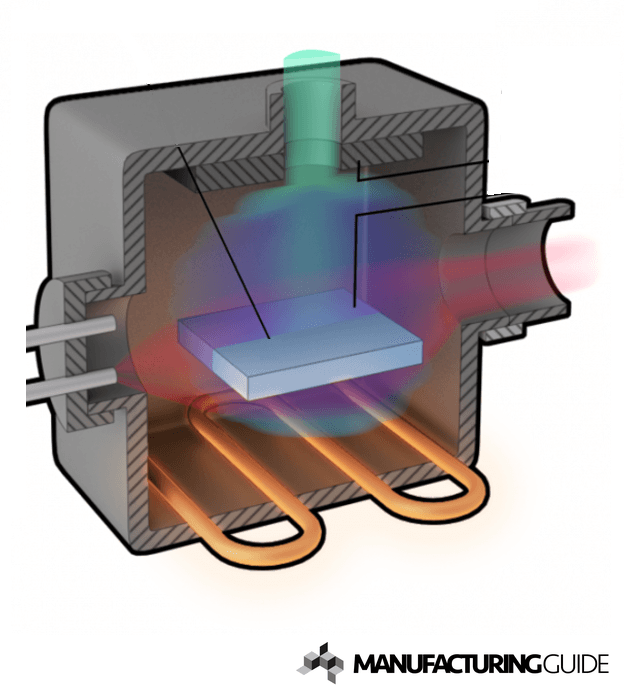
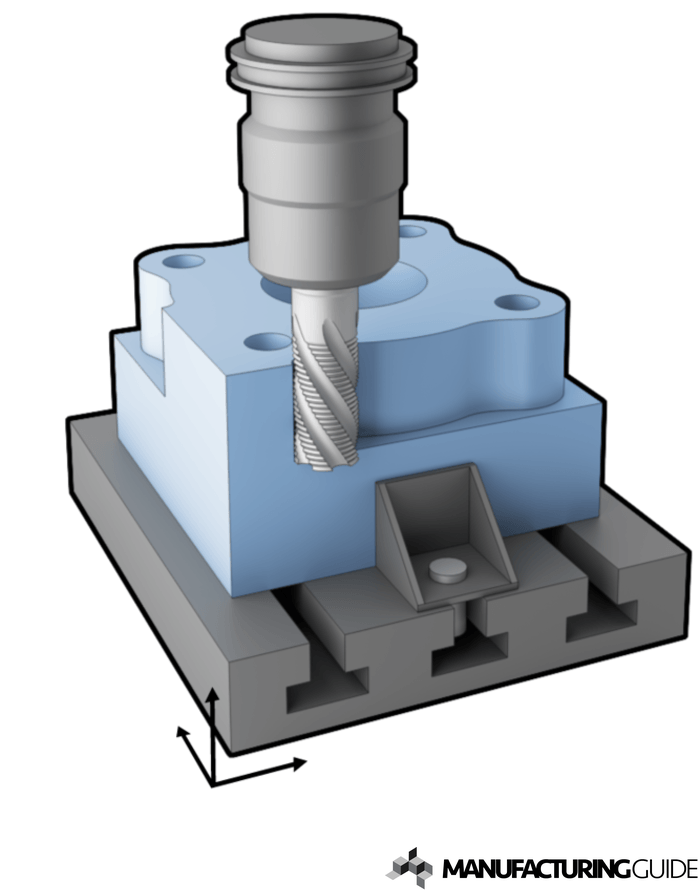
CNC MILLING
CNC milling is a machining process that utilizes computerized controls to manage the movement and operation of multi-point rotary cutting tools. As the tools rotate and move across the surface of the workpiece, they slowly remove excess material to achieve the desired shape and size.
CNC TURNING
A simple CNC lathe operates on 2 axes and moves the material it is cutting with a rotation. The material’s rotation is commonly called ‘turning’, so you may hear CNC lathes being referred to as CNC turning machines. Lathe machines with more than 2 axes, perhaps with an additional Y-axis or sub-spindle, will likely be nicknamed a CNC turning centre rather than a CNC turning machine.
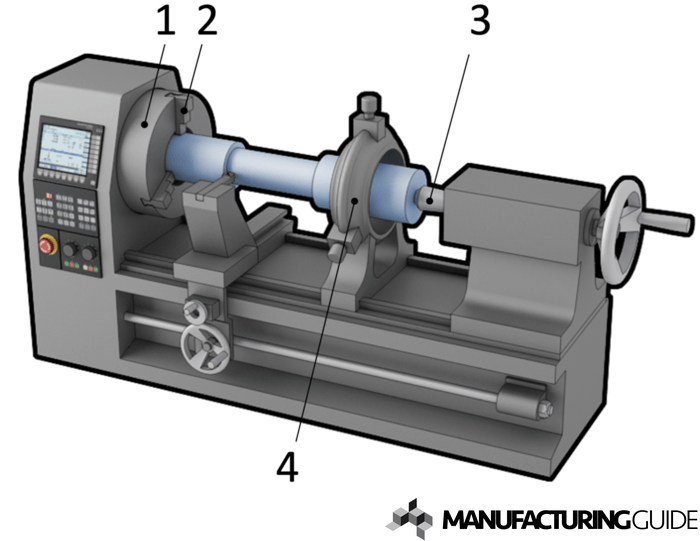

CYLINDRICAL GRINDING
The workpiece is placed in a chuck or fixture that allows rotation against the spinning grinding wheel. The grinding wheel removes material from the workpiece by abrasion until it reaches the desired dimension and surface finish.
FLAT GRINDING
The workpiece is placed in a fixture under the rotating grinding wheel. The wheel then moves horizontally across the material and grinds down the workpiece surface in one or more steps until the desired thickness or surface roughness is achieved. To avoid that the material becomes too hot due to friction a coolant (cutting fluid) is often used.
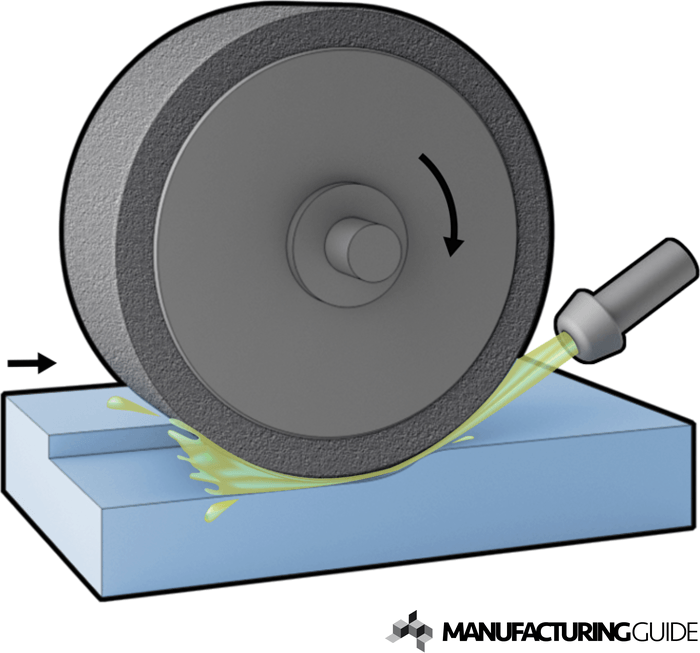
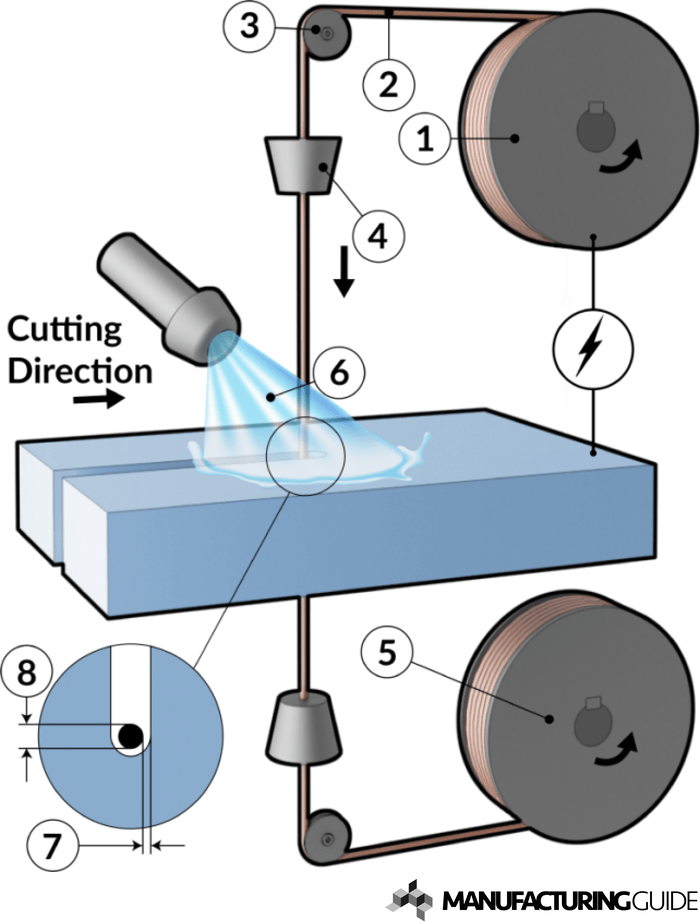
WIRE ELECTRICAL DISCHARGE MACHINING (EDM)
Connection via power source causes the wire to act as cathode and the workpiece as anode. When the electrode, in this case the wire, is placed close to the workpiece, spark discharge occurs, which causes material from both the workpiece and the wire to be removed.
The method is usually used to process hard and brittle materials where conventional milling is not appropriate, such as in the manufacture of cutting tools and dies for extrusion.
RAM/SINK ELECTRICAL DISCHARGE MACHINING (EDM)
The tool consists of a die [1] with the inverse shape of the desired cutting.
Connection via power source allows adjustable mold to act as cathode and workpiece as anode. When the lower mold is brought close to the workpiece, intermittent spark discharges occur, which means that the workpiece is melted and vaporized. The discharge is assisted by a dielectric liquid [2], which helps to cool the process and carry away removed material in the meantime the die is lowered to the desired depth.
The spark gap [3] makes the machined surface slightly separate from the outer contour of the tool.
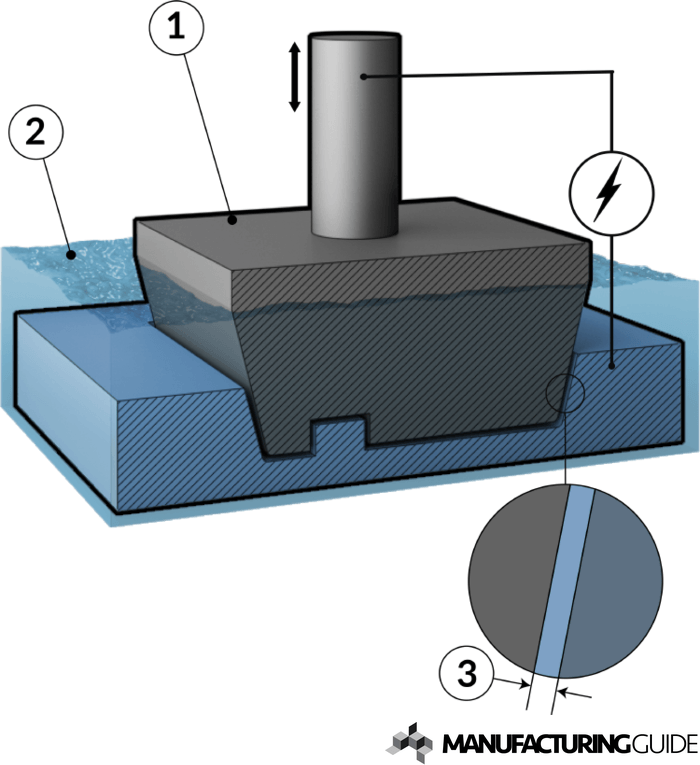
For your other machining requirements check out Dura-Metal Products Corporation
Our ADDPlus Services Include:
ADDTEC3DM™ can take your 3D printing to new heights with our ADD Plus program. We deliver outstanding results and certified quality on every project. When you need critical features to be 100 percent accurate, we're the ones you can trust. Rely on our over 50 years of precision fabrication experience. Call us for a free quote!
50 years of ultra-precision machining available as a resource to provide a end product to meet your standards.
VAPOR SMOOTHING
Vapor smoothing is a post process that can be applied to all composite parts. Widely used around MJF parts the vapor smoothing chemically melts the surface of the part. In the case of MJF parts this gives a darker gray tone to the part as well as seals and hardens the surface.


CNC MILLING
CNC milling is a machining process that utilizes computerized controls to manage the movement and operation of multi-point rotary cutting tools. As the tools rotate and move across the surface of the workpiece, they slowly remove excess material to achieve the desired shape and size.
CNC TURNING
A simple CNC lathe operates on 2 axes and moves the material it is cutting with a rotation. The material’s rotation is commonly called ‘turning’, so you may hear CNC lathes being referred to as CNC turning machines. Lathe machines with more than 2 axes, perhaps with an additional Y-axis or sub-spindle, will likely be nicknamed a CNC turning centre rather than a CNC turning machine.


CYLINDRICAL GRINDING
The workpiece is placed in a chuck or fixture that allows rotation against the spinning grinding wheel. The grinding wheel removes material from the workpiece by abrasion until it reaches the desired dimension and surface finish.
FLAT GRINDING
The workpiece is placed in a fixture under the rotating grinding wheel. The wheel then moves horizontally across the material and grinds down the workpiece surface in one or more steps until the desired thickness or surface roughness is achieved. To avoid that the material becomes too hot due to friction a coolant (cutting fluid) is often used.


WIRE ELECTRICAL DISCHARGE MACHINING (EDM)
Connection via power source causes the wire to act as cathode and the workpiece as anode. When the electrode, in this case the wire, is placed close to the workpiece, spark discharge occurs, which causes material from both the workpiece and the wire to be removed.
The method is usually used to process hard and brittle materials where conventional milling is not appropriate, such as in the manufacture of cutting tools and dies for extrusion.
RAM/SINK ELECTRICAL DISCHARGE MACHINING (EDM)
The tool consists of a die [1] with the inverse shape of the desired cutting.
Connection via power source allows adjustable mold to act as cathode and workpiece as anode. When the lower mold is brought close to the workpiece, intermittent spark discharges occur, which means that the workpiece is melted and vaporized. The discharge is assisted by a dielectric liquid [2], which helps to cool the process and carry away removed material in the meantime the die is lowered to the desired depth.
The spark gap [3] makes the machined surface slightly separate from the outer contour of the tool.

For your other machining requirements check out Dura-Metal Products Corporation
Our ADDPlus Services Include:
ADDTEC3DM™ can take your 3D printing to new heights with our ADD Plus program. We deliver outstanding results and certified quality on every project. When you need critical features to be 100 percent accurate, we're the ones you can trust. Rely on our over 50 years of precision fabrication experience. Call us for a free quote!
50 years of ultra-precision machining available as a resource to provide a end product to meet your standards.
VAPOR SMOOTHING
Vapor smoothing is a post process that can be applied to all composite parts. Widely used around MJF parts the vapor smoothing chemically melts the surface of the part. In the case of MJF parts this gives a darker gray tone to the part as well as seals and hardens the surface.


CNC MILLING
CNC milling is a machining process that utilizes computerized controls to manage the movement and operation of multi-point rotary cutting tools. As the tools rotate and move across the surface of the workpiece, they slowly remove excess material to achieve the desired shape and size.
CNC TURNING
A simple CNC lathe operates on 2 axes and moves the material it is cutting with a rotation. The material’s rotation is commonly called ‘turning’, so you may hear CNC lathes being referred to as CNC turning machines. Lathe machines with more than 2 axes, perhaps with an additional Y-axis or sub-spindle, will likely be nicknamed a CNC turning centre rather than a CNC turning machine.


CYLINDRICAL GRINDING
The workpiece is placed in a chuck or fixture that allows rotation against the spinning grinding wheel. The grinding wheel removes material from the workpiece by abrasion until it reaches the desired dimension and surface finish.
FLAT GRINDING
The workpiece is placed in a fixture under the rotating grinding wheel. The wheel then moves horizontally across the material and grinds down the workpiece surface in one or more steps until the desired thickness or surface roughness is achieved. To avoid that the material becomes too hot due to friction a coolant (cutting fluid) is often used.


WIRE ELECTRICAL DISCHARGE MACHINING (EDM)
Connection via power source causes the wire to act as cathode and the workpiece as anode. When the electrode, in this case the wire, is placed close to the workpiece, spark discharge occurs, which causes material from both the workpiece and the wire to be removed.
The method is usually used to process hard and brittle materials where conventional milling is not appropriate, such as in the manufacture of cutting tools and dies for extrusion.
RAM/SINK ELECTRICAL DISCHARGE MACHINING (EDM)
The tool consists of a die [1] with the inverse shape of the desired cutting.
Connection via power source allows adjustable mold to act as cathode and workpiece as anode. When the lower mold is brought close to the workpiece, intermittent spark discharges occur, which means that the workpiece is melted and vaporized. The discharge is assisted by a dielectric liquid [2], which helps to cool the process and carry away removed material in the meantime the die is lowered to the desired depth.
The spark gap [3] makes the machined surface slightly separate from the outer contour of the tool.

For your other machining requirements check out Dura-Metal Products Corporation
Our ADDPlus Services Include:
ADDTEC3DM™ can take your 3D printing to new heights with our ADD Plus program. We deliver outstanding results and certified quality on every project. When you need critical features to be 100 percent accurate, we're the ones you can trust. Rely on our over 50 years of precision fabrication experience. Call us for a free quote!
ADDTEC3DM® is a trademark for the exclusive use of Dura-Metal Products Corporation.

